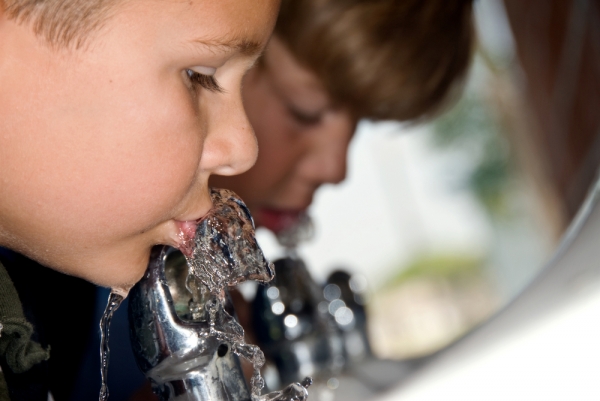Less than one-third of kids and teens meet the daily recommended daily water intake for their age group. To improve that statistic, the USDA issued a mandate to go into effect at the beginning of the 2026-2026 school year stating the schools participating in the National School Lunch Program must provide free drinking water to students.
Researchers from the University of Michigan and University of Illinois have found the majority of schools have met the mandate and provide water to their students during lunch. But the real trick is getting students to actually drink more water.
Even though the water available is free, many students are still drinking sugar-sweetened beverages instead. These drinks can lead to obesity and dental problems. Not getting enough water during the day can also cause dehydration in students, especially in the one-quarter of teens drinking less than one serving of water a day.
By providing water at lunch through water fountains, pitchers on the table, or free bottles of water, schools are encouraging their students to choose water instead of a less healthy beverage. Though most schools have complied and provided water, schools in the South were more likely to meet the requirements than any other region in the United States.
“This is consistent with other nationally-representative research showing that school districts in the South have made faster progress in developing nutrition-related school wellness policies, and that they have stronger policies than do districts in other regions of the US,” said corresponding author Lindsey Turner, Research Scientist at the Institute for Health Research and Policy at the University of Illinois at Chicago in a statement.
Considering the South is notorious for its sky-high obesity rates, it’s good to know that schools in the region are taking students’ nutrition seriously.
The schools may be taking it seriously, but unfortunately, the students may need a little more convincing. Researchers found students are still concerned with the cleanliness of available water fountains, even those that had been labeled “clean” or “very clean.” Some students also said they were worried about the quality of the drinking water. Still others mentioned the water wasn’t easily accessible.
“Although many schools rely on water fountains, fountains may not be very effective at encouraging water consumption,” Dr. Turner said. “The elementary students may need permission to get up, and if water is not available on the table with the meal, students must make a special trip and may have to wait in line to get water.”
Though there are still challenges ahead, the water mandate from the USDA is making water more accessible to over 30 million children, and helping them make better health choices.
Also Read:
The 15 Worst Pieces of Diet Advice We Feed Our Kids
You’re Not Crazy. The Cereal Box is Designed to Stare at You
“Coffee for You, Water for All.” TOMS Enters the Coffee Business

